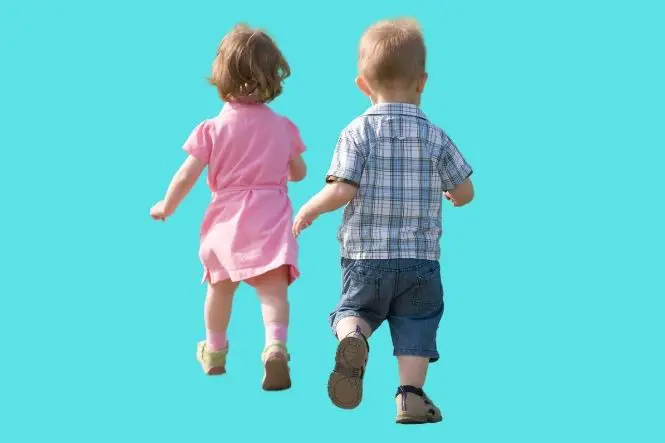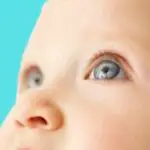When we talk about a child’s progression through various different ages and stages, it can be easy to assume that growth and development are the same concepts that have the same meaning. While the two concepts are related and sometimes influence the other, they have their own distinct meaning when it comes to childhood. Simply put, the difference between growth and development is that growth refers to a measurable change in physical size, whereas development is a gradual change in a person’s functioning.
Growth is something that can be easily measured or described in quantitative or numerical terms. It is an aspect that takes place externally, that is part of a person’s appearance. Growth has a specific time period during which it occurs and it can be defined by size. Examples of growth are weight, height, age, and any body measurements.
Development is not usually described numerically but instead uses qualitative descriptions. It refers to the internal process that occurs within a person that cannot be easily identified by a person’s external appearance. Development is a lifelong process and does not stop happening at any set time. It has to do with the changes in a person’s functioning and abilities.
Table of Contents
Qualitative vs. Quantitative
One of the main differences between growth and development is the nature of how these things can be explained. Growth tends to be described in quantitative ways and can be expressed as a measurement in numbers. On the other hand, development is mainly described in qualitative expressions, using words and descriptions. Some aspects of development can also be defined in quantitative measures.
An example of a quantitative measure of growth would be a child’s height–this measurement would be defined in numbers, such as 3 feet or 91 centimeters. Weight is another example of growth that can be defined quantitatively, for example, the child weighs 35 pounds or 15 kilograms. Other aspects of growth would include things like age, head circumference of infants, or a child’s shoe size.
Most aspects of development are not as easy to measure and are usually described using qualitative measures that explain the changes in detail. For example, if one were to describe a child’s emotional development, they might talk about a child’s ability to manage their emotions–not something that can be quantified. Similarly, a description of a child’s social development may include aspects related to empathy which cannot be described with numbers. Few aspects, such as IQ, use numbers to quantify a child’s development.
Internal vs. External
Another major difference between growth and development is that one happens internally and the other occurs externally. Growth happens externally–that is you can see the physical changes in a child by looking at them. Development, on the other hand, is not easily identifiable in this way as it is more of an internal process that occurs in the child.
Growth can easily be observed in children by examining their physical appearance or using some type of measurement instrument. For example, if a child weighed 30 pounds last month and this month they weigh 33 pounds, this is evidence that growth has occurred–it is a measurable, external change. Similarly, when a teenager shoots up from 5 feet tall to 5 feet 6 inches over the course of a summer, this is an external example of growth.
Development takes place within the child, though it can be demonstrated through activities that are observable. An infant who is three months old may not be able to roll over from their back to their stomach–however, if you observe the same child at the age of five months, they are most likely to be able to complete this task. This is an example of internal development as the changes have taken place within the child and cannot be measured or quantified like growth can.
Ongoing vs. Defined Time
When and how changes occur are other aspects of growth and development that can be used to determine which one is happening. Growth is something that occurs over a certain period of time and does not necessarily continue through a person’s lifetime. Development is an ongoing process that begins in infancy and continues until a person’s end of life–there are always aspects of development occurring at all times, regardless of age.
Height is an excellent example of how growth has a defined time period in which changes occur. The vast majority of individuals reach their maximum height by the time they are 18 years of age–after this point, their growth stops occurring. Likewise, a child’s head grows rapidly during the first few years of life and continues growing gradually until it reaches its final size in a person’s late teens or early twenties. Both examples have endpoints to the period in which growth occurs–it does not continue indefinitely.
Development is not something that only occurs at certain time periods in a person’s life–various aspects of development happen continuously through childhood and adulthood. Since development can be described as changes to an individual’s behavior, an example of this ongoing occurrence would be one’s literacy skills. During childhood, a person starts becoming familiar with language, learns to read, and expands their vocabulary–this will continue throughout their life as they incorporate new words and possibly new languages into their skill set.
Size vs. Function
Growth and development can also be differentiated by examining size and function. Development is a gradual change in a person’s functioning or the way in which they perform a task or skill. Conversely, growth is simply a change in a person’s size. The difference between size and function provides an easy way to tell whether something is a change in development or a change in growth.
A great example would be a child who plays basketball: this child has increased in height by 4 inches over the last two months and they have also increased their average points per game by 5 points. The increase in height is a measure of growth because it relates to the child’s size. The increase in their scoring average is a change in development since it is based on their skill or function.
It is important to note that size and function are not always correlated, that is to say, that development is not always a result of growth. For instance, a child may go through a growth spurt that results in significant height and possibly weight gain. However, they may still have the same level of functioning when it comes to how fast they can run or how accurately they can hit a tennis ball with a racquet.
Final Thoughts on Growth and Development
Knowing the differences between growth and development can be helpful when you are trying to measure or explain the changes in a child’s size and functioning. Quantitative and qualitative descriptors are both useful ways of reviewing the changes in a child over time. Having an understanding of a child’s growth and development can help you to have realistic expectations when it comes to what your child is experiencing. These two concepts are also useful when speaking with any health care or social service providers who may be involved in your child’s care.


